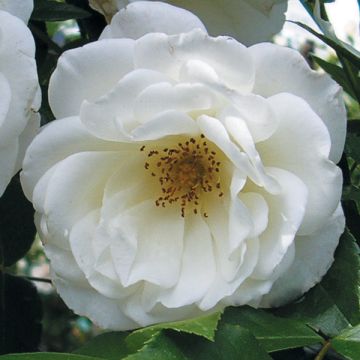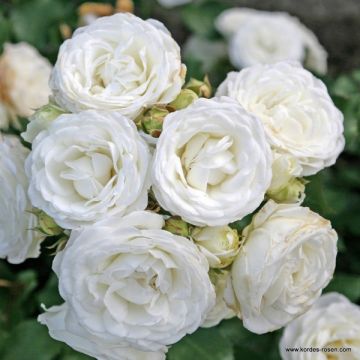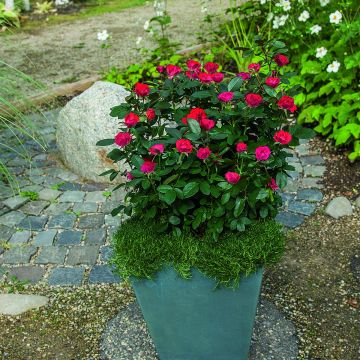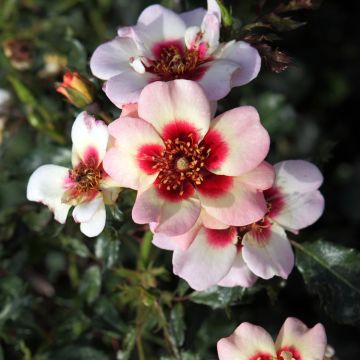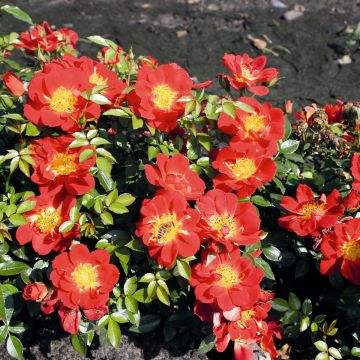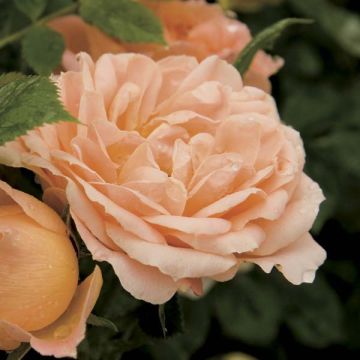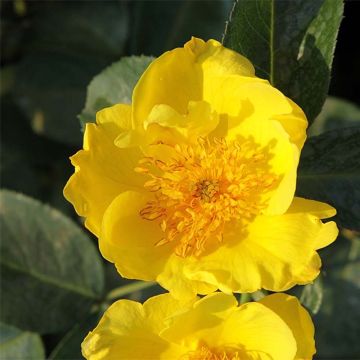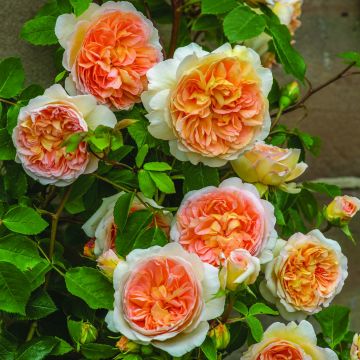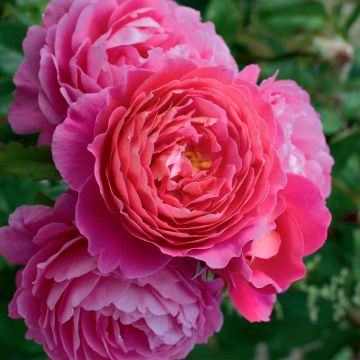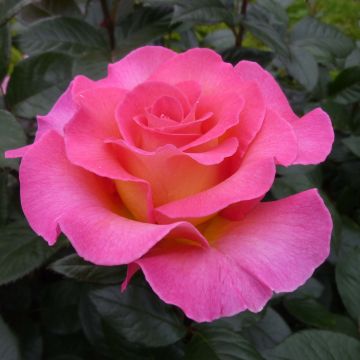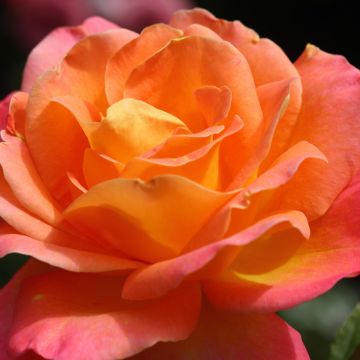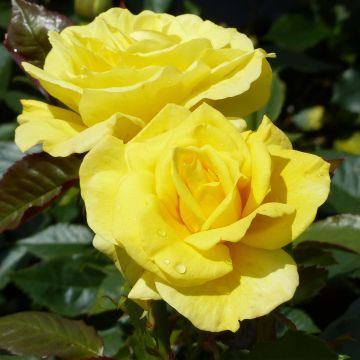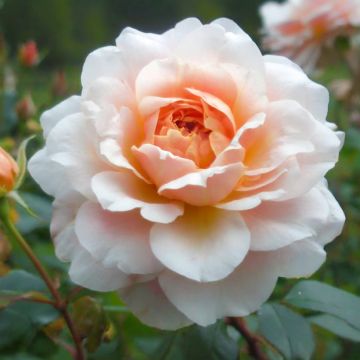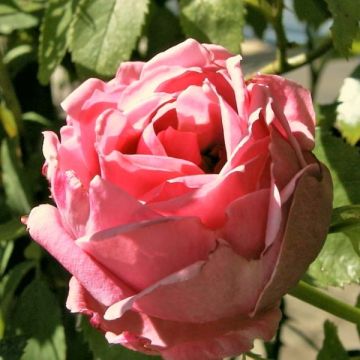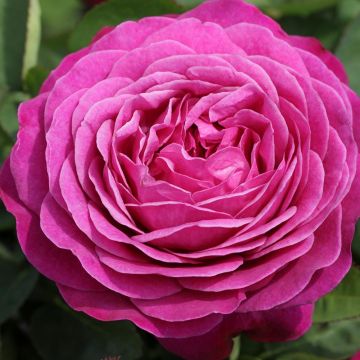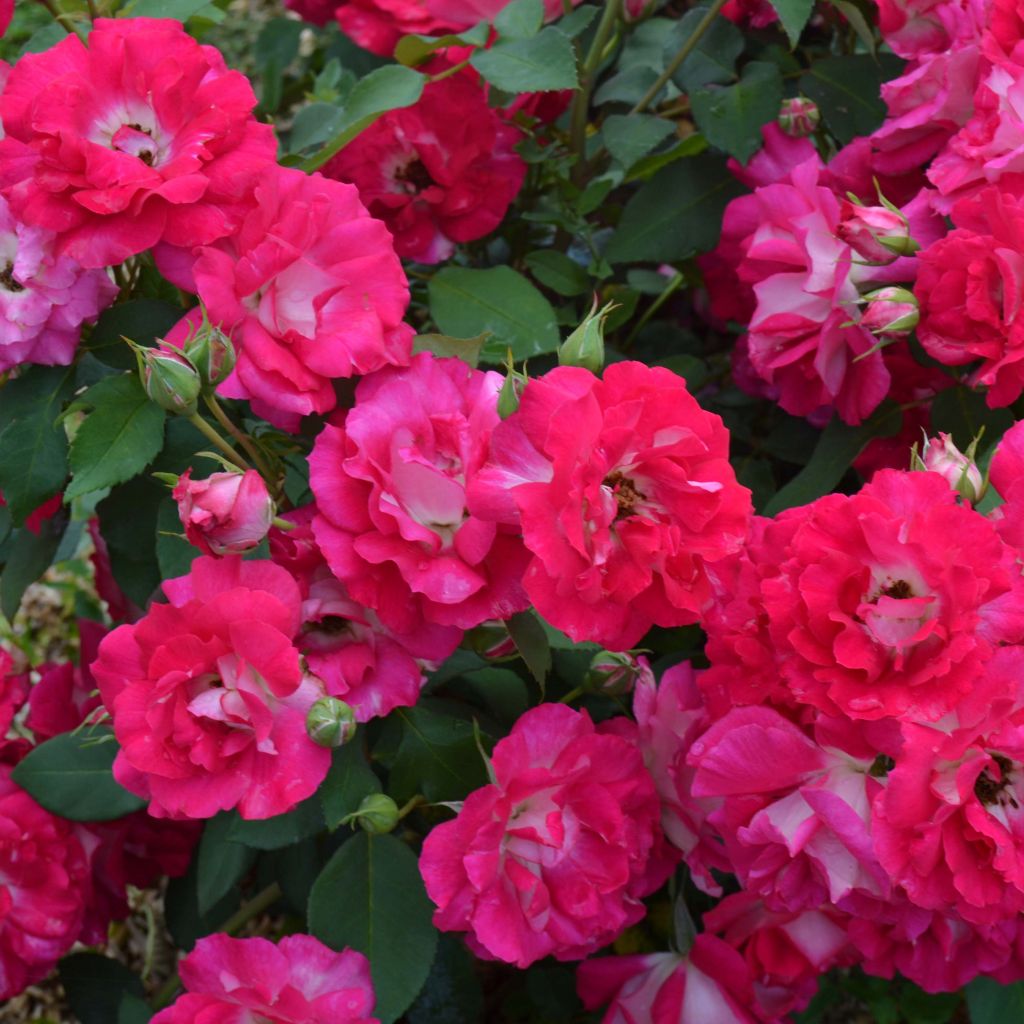

Rosa x polyantha Bordure Vive - Polyantha Rose
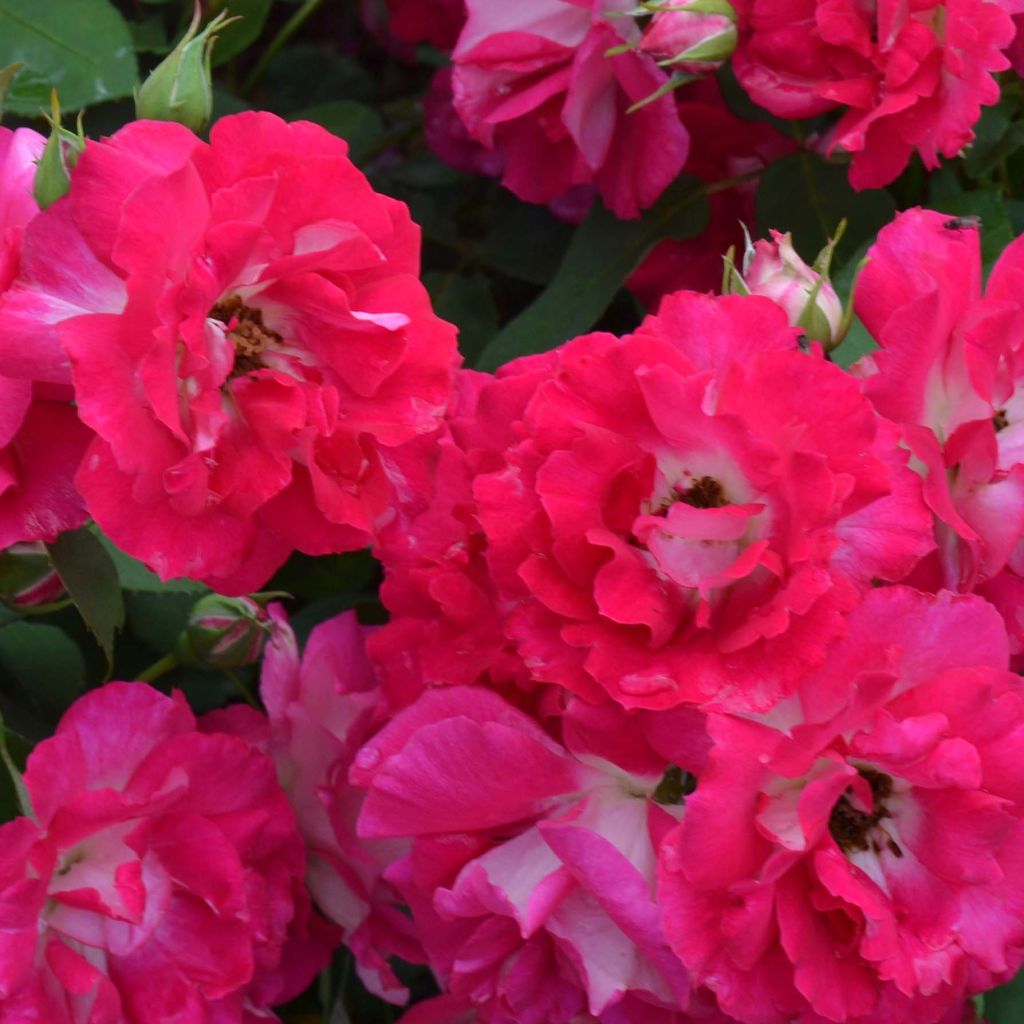

Rosa x polyantha Bordure Vive - Polyantha Rose
Rosa x polyantha Bordure Vive - Polyantha Rose
Rosa x polyantha Bordure Vive® 'Delboviv'
Polyantha Rose
This item cannot be shipped to the selected country
Delivery charge from €5.90
Delivery charge from €5.90
Delivery to Corse prohibited
More information
Delivery charge from €5.90
Delivery charge from €5.90
Delivery to Corse prohibited
More information
Schedule delivery date,
and select date in basket
This plant carries a 24 months recovery warranty
More information
We guarantee the quality of our plants for a full growing cycle, and will replace at our expense any plant that fails to recover under normal climatic and planting conditions.
From €5.90 for pickup delivery and €6.90 for home delivery
Express home delivery from €8.90.
From €5.90 for pickup delivery and €6.90 for home delivery
Express home delivery from €8.90.
Delivery to Corse prohibited: UE law prohibits the import of this plant from mainland France to Corse as part of the fight against Xylella fastidiosa. Please accept our sincere apologies.
More information
Does this plant fit my garden?
Set up your Plantfit profile →
Description
The 'Bordure Vive' Dwarf Rose is the shortest variety in the lovely 'Bordures' series developed by Delbard. This polyantha rose is remarkable for its early flowering, with a vibrant and intense cyclamen pink colour, almost continuous from May to October. Its semi-double rosettes, illuminated by a lighter pink centre, bloom in clusters on healthy, dark, and matte foliage. Perfect as a border plant, in a flowerbed, or in a garden pot, alone or combined with other varieties, this charming little rose bush will fit anywhere: as a border plant, in a flowerbed, as a low hedge, or even in a pot on the terrace or balcony.
The flowers of the 'Bordure Vive' Rose are gathered in small terminal clusters of 4 to 6 flowers. They come from the polyantha rose, an old hybrid resulting from the Rosa multiflora and Rosa chinensis. It has a particularly compact and bushy habit, forming a dome shape that is as wide as it is tall. It will not exceed 40 cm (16in) in all dimensions. The small double cup-shaped flowers, well-formed in rosettes, emerge from carmine red buds. They open to reveal a lovely cyclamen pink colour with a touch of light pink at the centre, with some petals' reverse side almost white. They reveal their bright yellow stamens later on. They bloom in large numbers in pyramidal clusters, almost continuously from May to September if the soil remains moist. This variety seems slightly susceptible to diseases and slightly less vigorous than its 'Bordures' series cousins when the ideal conditions are not met. It develops dark green, deciduous foliage with a matte finish, carried by thorny stems. This rose has received 3 awards.
The 'Bordure Vive' rose prefers fertile, deep, and moist soils, and a sunny exposure. Its low and compact habit, with a neat appearance, works wonders in rockeries or on slopes, where it will cover the ground. It can also be planted in groups of 3 plants, arranged in a triangle, or as a standalone plant in a short grass meadow. Plant it en masse as a border along pathways or to highlight shrub beds. It will integrate perfectly into beds of light or opulent perennials and pairs well with other dwarf roses such as 'Bordure Blanche', 'Bordure Nacrée', or 'Bordure Rose', depending on the preferences of each gardener. For example, it can be combined with perennial geraniums (Geranium 'Blue Cloud', 'Anne Folkard', 'Nimbus', 'Orion, 'Rozanne'), bellflowers (lactiflora, rapunculoides), catmints, snapdragons, foxgloves, or carnations. It is naturally perfect for decorating the terrace or balcony, planted in a beautiful pot, a large planter, or a garden pot.
Created by Delbard (France) in 1985.
Rosa x polyantha Bordure Vive - Polyantha Rose in pictures
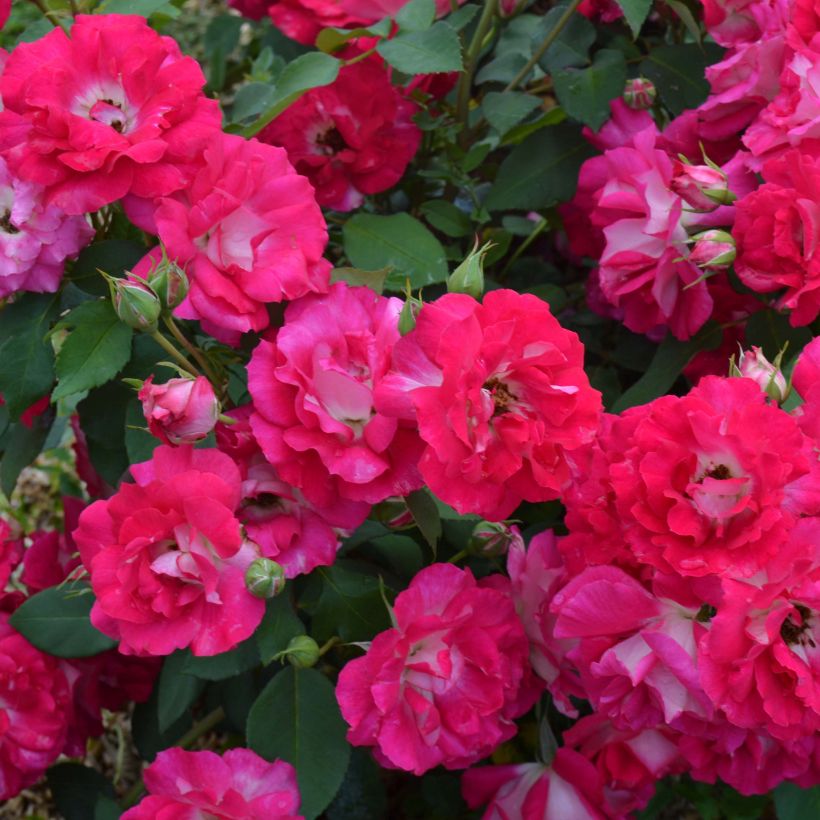

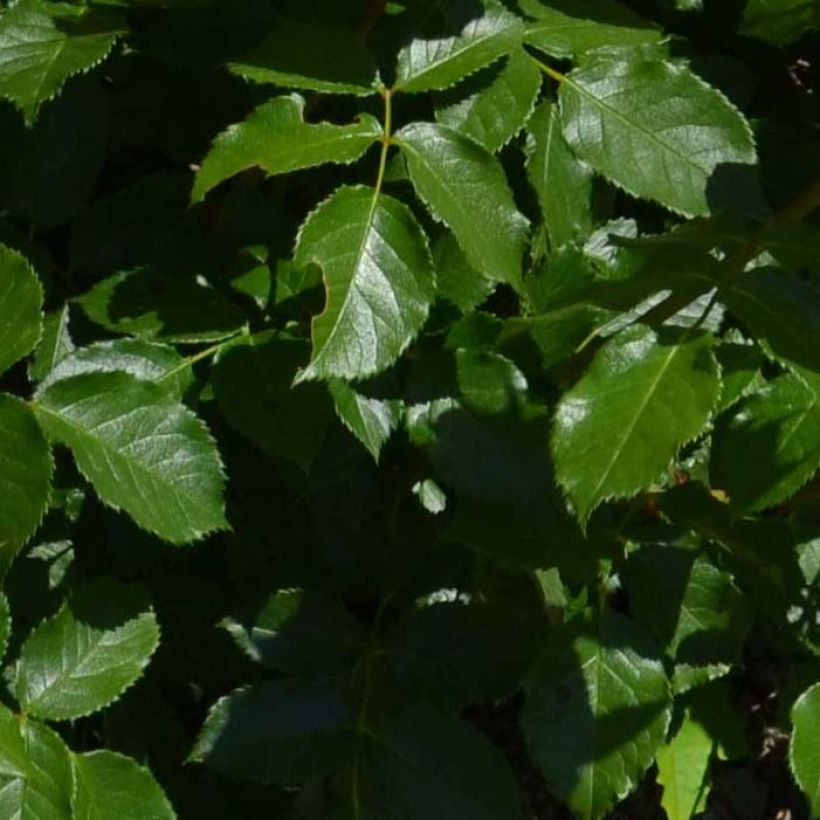

Plant habit
Flowering
Foliage
Botanical data
Rosa
x polyantha
Bordure Vive® 'Delboviv'
Rosaceae
Polyantha Rose
Cultivar or hybrid
Rosa multiflora (4L/5L pot), Rosa canina Laxa (Wrapped bare root)
Other Dwarf and mini Roses
Planting and care
Roses prefer a sunny location (at least 4 to 5 hours of sun per day) but sheltered from the scorching midday rays and strong winds. They appreciate loose, permeable, deep, and fertile soil. They prefer a neutral to slightly acidic soil, but will adapt to any garden as long as the soil is well-worked and sufficiently rich. To plant your rose in a pot, work the soil to a depth of 25 cm, crumble the soil well, and place an amendment such as dried blood or dehydrated horn at the bottom of the planting hole. Position your plant, removed from its pot, and cover the top of the root ball with 3 cm (1in) of soil. Fill in the hole and water generously to remove any air pockets. In dry weather, regular watering is necessary for a few weeks to facilitate root growth. Also, remember to provide your rose with special rose fertilizer to stimulate flowering.
Planting period
Intended location
Care
Roses by purpose
Haven't found what you were looking for?
Hardiness is the lowest winter temperature a plant can endure without suffering serious damage or even dying. However, hardiness is affected by location (a sheltered area, such as a patio), protection (winter cover) and soil type (hardiness is improved by well-drained soil).

Photo Sharing Terms & Conditions
In order to encourage gardeners to interact and share their experiences, Promesse de fleurs offers various media enabling content to be uploaded onto its Site - in particular via the ‘Photo sharing’ module.
The User agrees to refrain from:
- Posting any content that is illegal, prejudicial, insulting, racist, inciteful to hatred, revisionist, contrary to public decency, that infringes on privacy or on the privacy rights of third parties, in particular the publicity rights of persons and goods, intellectual property rights, or the right to privacy.
- Submitting content on behalf of a third party;
- Impersonate the identity of a third party and/or publish any personal information about a third party;
In general, the User undertakes to refrain from any unethical behaviour.
All Content (in particular text, comments, files, images, photos, videos, creative works, etc.), which may be subject to property or intellectual property rights, image or other private rights, shall remain the property of the User, subject to the limited rights granted by the terms of the licence granted by Promesse de fleurs as stated below. Users are at liberty to publish or not to publish such Content on the Site, notably via the ‘Photo Sharing’ facility, and accept that this Content shall be made public and freely accessible, notably on the Internet.
Users further acknowledge, undertake to have ,and guarantee that they hold all necessary rights and permissions to publish such material on the Site, in particular with regard to the legislation in force pertaining to any privacy, property, intellectual property, image, or contractual rights, or rights of any other nature. By publishing such Content on the Site, Users acknowledge accepting full liability as publishers of the Content within the meaning of the law, and grant Promesse de fleurs, free of charge, an inclusive, worldwide licence for the said Content for the entire duration of its publication, including all reproduction, representation, up/downloading, displaying, performing, transmission, and storage rights.
Users also grant permission for their name to be linked to the Content and accept that this link may not always be made available.
By engaging in posting material, Users consent to their Content becoming automatically accessible on the Internet, in particular on other sites and/or blogs and/or web pages of the Promesse de fleurs site, including in particular social pages and the Promesse de fleurs catalogue.
Users may secure the removal of entrusted content free of charge by issuing a simple request via our contact form.

































